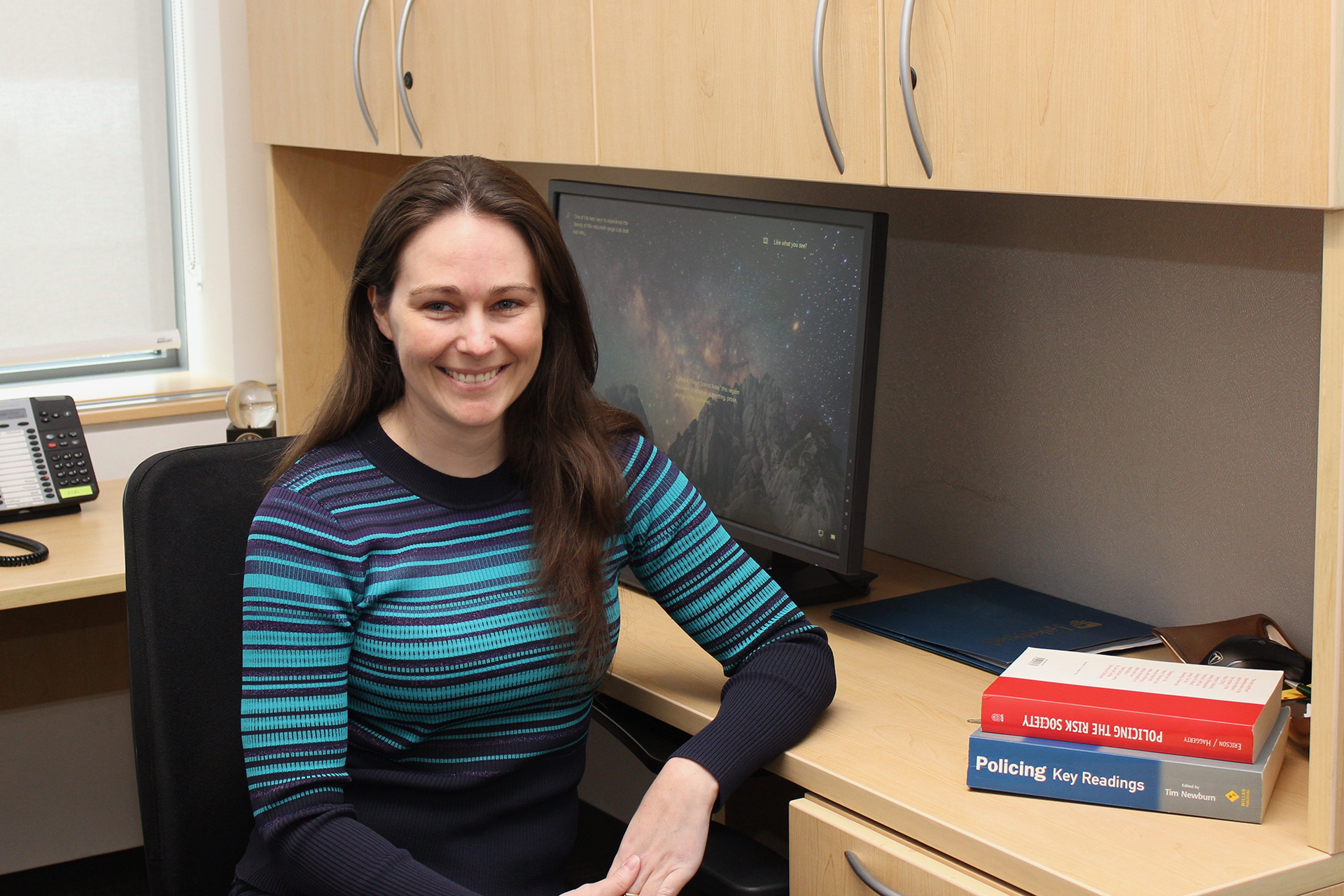Research in Action: Studies reveal impacts of police surveillance technology
As a researcher studying the use and impacts of police body-worn cameras, Dr. Alana Saulnier is often asked if she’s for or against surveillance technology.
“I always say that I don’t know, and that it’s dependent on the situation and the stakeholder perspective you adopt,” says Saulnier, a criminology professor at Lakehead University’s Orillia campus. “As a researcher, I’m not going in with a bias – I’m there to see what the data can tell us.”
And as Saulnier is proving, the data has a lot to say.
Largely driven by the public push for surveillance technology in the US, body-worn cameras (BWCs) are being piloted and adopted by a growing number of police services across Canada, including Thunder Bay and Toronto. But without rigorous study of the benefit, there are unanswered questions about the cost, additional workload, and best practices for use.
Saulnier’s partnership with the Durham Regional Police Service is in fact the first major external evaluation of the impact of this surveillance technology on policing in Canada. Drawing on dozens of in-depth interviews, more than 300 public surveys, and information from over 30,000 calls for police service, she’s built a rich pool of data to explore.
“It’s a sensitive issue, but the officers were all very open and receptive to the research,” says Saulnier. “Our partnership meant we could really examine if there is evidence to support the intended reasons for using this tech.”
For example, her data showed there does not tend to be a difference in daily workload between officers using or not using a BWC; the exception being BWCs increasing the time taken to resolve traffic calls by roughly six minutes. And when camera footage was flagged and tracked as evidence for prosecutors, it provided significantly more pro-prosecution court resolutions – a procedural insight that could translate to real time and cost savings in the justice system.
During a R.I.D.E. check stop project, Saulnier and her student research assistants also found that people described police encounters as more positive when the cameras were used. One explanation, suggests Saulnier, is that the technology may act as a symbolic gesture to community members that police are attentive to public concerns linked to the uptake of BWCs.
Her interviews with victims of domestic and sexual violence provided further valuable perspective on the use of BWCs, audio vs. video recording, and disclosure and consent of surveillance – information that can help better support vulnerable survivors.
“Police surveillance should always be for the public,” says Saulnier, who will submit her final 140-page report to the Durham Regional Police Services Board in March 2020. “How can we make evidence-based decisions about the use of technologies like BWCs, as well as evidence-based policies when the tech is adopted, that make policing and surveillance for people? These are the critical questions I ask in my classes and in my research.”
Dr. Alana Saulnier is the Criminology Program Coordinator and an Assistant Professor in the Department of Interdisciplinary Studies at Lakehead University, Orillia. Her research on body-worn cameras in partnership with the Durham Regional Police Service was funded by the Social Sciences and Humanities Research Council.


